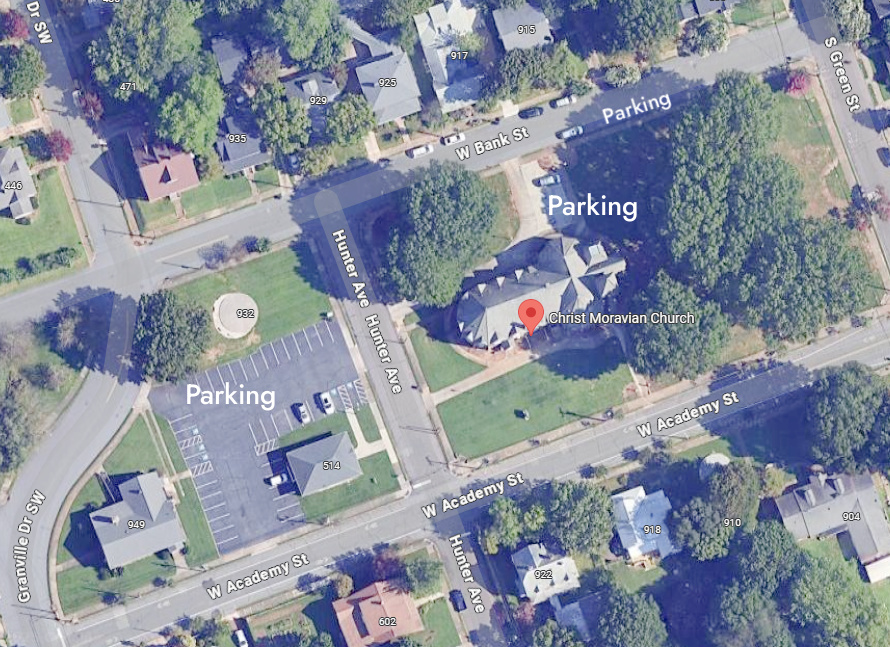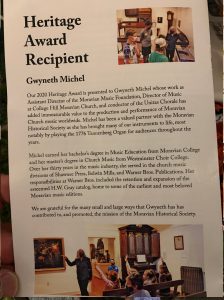Notes from Nola … Adapting an Anthem for a Smaller Choir
The Moravian Music Foundation preserves, shares, and celebrates Moravian musical culture.
You have this anthem … this piece you’ve loved for years, or that you just found … but your choir isn’t very large, and you’re short on sopranos with a high range, or basses with a low range. Maybe your numbers are way down. Maybe its text makes it absolutely perfect for a particular Sunday, one where a lot of your folks are going to be away.
What do you do? Give up and wish you were somewhere with a choir of 45, all of whom have a good full voice range and are demon sight-readers? Not a chance! There may be ways to make it work … here are a few ideas.
Voice ranges too wide? I’ll talk about the soprano part, because that’s often where the challenges are. Especially many early Moravian anthems seem to require sopranos with high G’s and A’s to spare! (Remember that the overall pitch was about a half step lower 200 years ago, and an F# really is a lot lower than a G for many singers!) Take a look at all the other notes in the chords (voice parts and accompaniment) below that high note or series of notes. Often you can substitute a lower note, or even a set of notes lower, for the one(s) in the written part. You can then leave the higher notes in the accompaniment; or bring in an instrumentalist to play the higher part; or if the higher notes are somewhere else in the lower voices or accompaniment, simply leave them out. Don’t be afraid to re-write a line or so to make it work for you! (Just don’t do it in ink in copies from the Lending Library.)
Don’t have all the parts? Many anthems have most or all of the vocal parts covered in the accompaniment. If that’s the case, simply leave out the parts you don’t have. Many anthems originally written for 4 parts can be very effective with two or three parts or even in unison. Again, don’t be afraid to add a few notes to the accompaniment if you need to! We can tell by looking at early manuscripts that our predecessors in church music did rewrite parts or add notes when they needed to.
Is it too long? Leave out a section! Pick somewhere in the middle, and make sure that the words make sense without the section you’re omitting; also make sure the accompaniment makes a smooth transition – or write your own.
Is it too short? Don’t hesitate to add a repeat where you need to. If the anthem has an introduction, will it work to repeat from the end of the anthem (or almost at the end) back to right after the introduction, where the choir enters? If the anthem has an “amen” at the end, though, see if you can skip back before that “amen”, and then it’ll be clear when you’re really done with the piece.
All these ideas add up to one thing: The music on the page is the starting point for you. You can feel free to adapt as you need to make the music work for your choir. You’ll know when you’ve adapted to the point that it doesn’t sound like the piece you wanted, but you’ll also know when you’ve made it into something your choir will be proud of having sung. And – as always! – never hesitate to contact our offices with specific questions, and we’ll do our best!
And there’s one more caution for you here: Don’t make this kind of changes in your final rehearsal before you plan to use the piece! Think this out ahead of time, and introduce your proposed changes to the choir the first time they see the piece. Not only will this make it less fearful to them, they’ll be really impressed with your planning and your expertise in making a piece work just for them! (And have them make all their notations in pencil. Someday you may really have the choir that can sing it as it was printed!)
Next time? Adapting an anthem for a smaller choir – some practical hints.
Musically yours,
– Nola






Leave a Reply